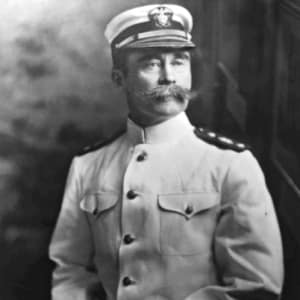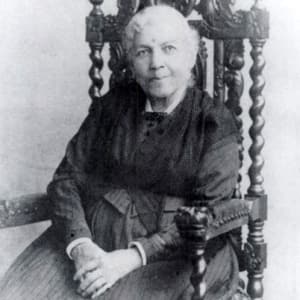
Robert Edwin Peary
American explorer Robert Edwin Peary is best known for claiming to be the first person to reach the geographic North Pole.
Synopsis
Born in Pennsylvania in 1856, Robert Edwin Peary was an American explorer who faced great criticism in his day for claiming to be the first person to have reached the geographic North Pole. It is now suspected that he may have been 30 to 60 miles short of the Pole, but is still credited with the achievement. Some modern critics focus on Peary's alleged mistreatment of the Inuit people. He died in 1920 in Washington, D.C.
Early Life
Born in Cresson, Pennsylvania, on May 6, 1856, Robert Edwin Peary moved to Maine with his family in 1859, after the death of his father. In 1881, he joined the U.S. Navy Civil Engineers Corps. Three years later, he began his career in exploration as chief assistant on a surveying expedition to Nicaragua. Soon, he became obsessed with the idea of reaching the North Pole.
Expeditions and North Pole Claim
To prepare for his goal, between 1886 and 1897, Robert E. Peary led five expeditions to Greenland and Arctic Canada. After departing from New York City on July 16, 1905, aboard the Roosevelt, Peary sledged to within 175 miles of the Pole in 1906. Melted ice blocking the sea path thwarted the mission’s completion. (Peary's 1905-1906 expedition had been backed by President Theodore Roosevelt, and his team was subsequently armed with the Roosevelt, which was considered a state-of-the-art vessel at the time and had the ability to cut through ice.)
On a new expedition in 1909, once again via the Roosevelt, but this time employing 24 men, 19 sledges and 133 dogs, Peary finally succeeded in reaching it—or at least he claimed to have. Leading a party that consisted of himself, his African-American assistant Matthew Henson, and the Inuits Ootah, Egingwah, Seegloo and Ooqueah, Peary had to fight against moving ice floes that may have caused him to miscalculate his position.
Return to America and Skepticism
When Peary returned to the United States, he discovered that a one-time expedition mate of his—Frederick A. Cook—claimed to have discovered the Pole a year earlier. Cook's claims were discredited, but Peary did not have any verifiable proof that he had reached the North Pole either, and, subsequently, both men's reputations suffered.
Though Peary was a rear admiral and had received 22 honorary medals from various countries, as well as three honorary doctorates, he had to testify before Congress about his claim that he had reached the North Pole. While Peary traveled the world during his last years to great acclaim, the truth about his accomplishments remains clouded to this day.
Peary has also received criticism over the years for his treatment of the Inuit people. After bringing six live Inuits back from an expedition in 1897, Peary gave them to his chief sponsor, the American Museum of Natural History in New York, for display, and all but one of the Inuits died.
It later became known that, during their Arctic tours in the 1890s, Peary and Henson had fathered children by Eskimo women.
Robert E. Peary died on February 20, 1920, in Washington, D.C.




